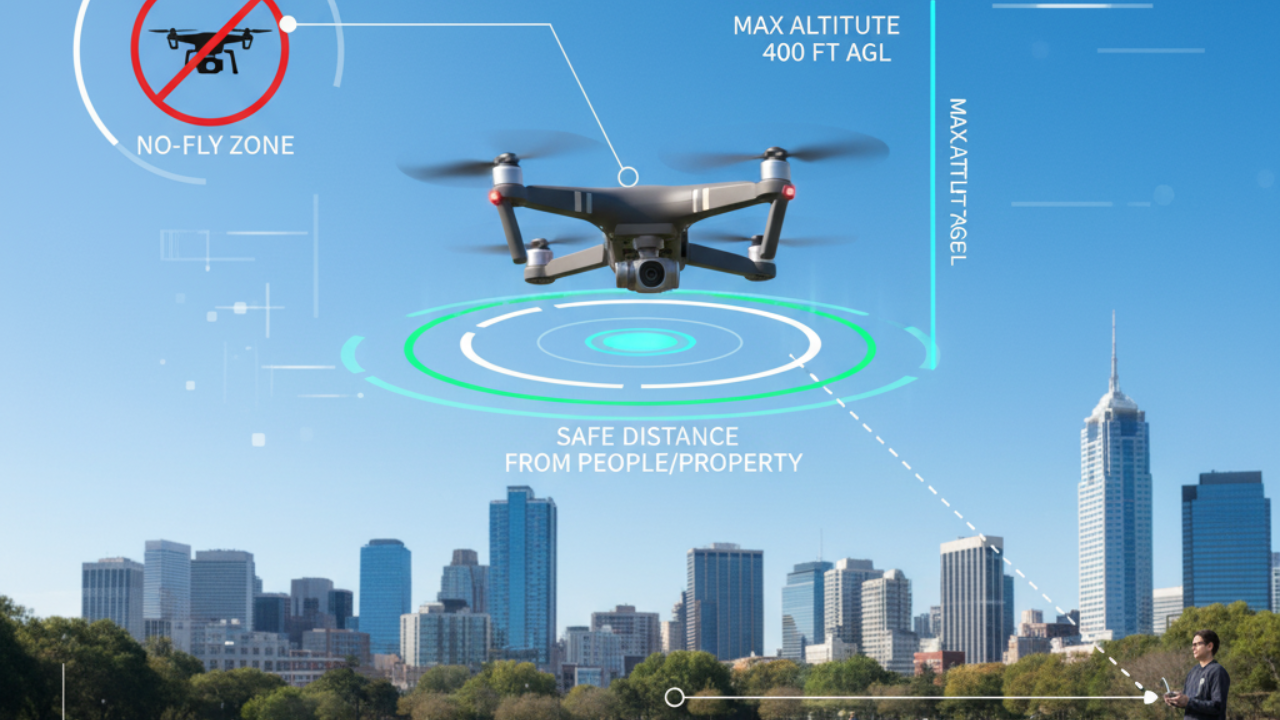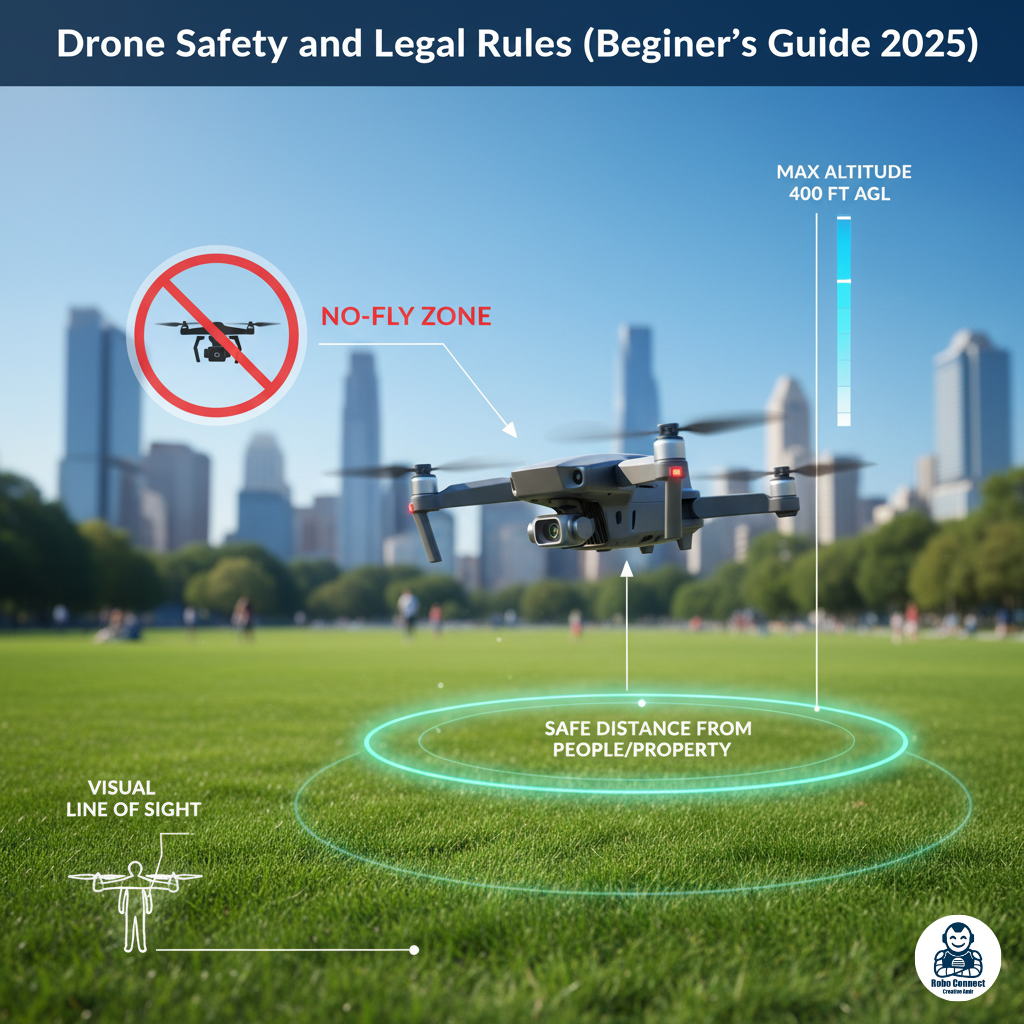Introduction
Flying drones is fun — but it’s not the wild west anymore. Governments worldwide now enforce safety rules & legal guidelines to ensure drones don’t interfere with aircraft, invade privacy, or pose risks to people.
As a responsible drone pilot (even as a beginner), you must know:
- General drone safety tips.
- Legal rules for hobby vs commercial flying.
- Where and when you can fly.
This guide makes it simple and beginner‑friendly.
Safety Tips Before Flying Any Drone
- Pre‑Flight Check
- Inspect propellers, motors, and battery.
- Ensure firmware/software is updated.
- Battery Safety
- Use only approved Li‑Po batteries.
- Never overcharge, puncture, or discharge below safe limits.
- Environment Scan
- Avoid crowded areas.
- Stay away from tall trees, power lines, and restricted zones.
- Line of Sight (LOS)
- Always keep your drone visible — don’t fly blind.
- Altitude & Distance Limits
- General recommendation: below 120m (400 ft).
- Fly within 500m radius unless you have advanced licensing.
Legal Rules (Vary by Country)
📝 Note: Regulations differ country‑by‑country, but here are the universal basics:
- Registration
- Many countries (like USA, UK, EU, India) require drones above 250g to be registered with aviation authority.
- Licensing
- Hobby use: often no pilot license required (small <250g drones).
- Commercial use (photography, mapping, delivery): almost all require certifications.
- No‑Fly Zones
- Airports (5–8km radius usually restricted).
- Military bases, government buildings, power plants.
- National parks (restricted in many regions).
- Privacy Laws
- Do not record individuals without consent.
- Some countries penalize privacy violations heavily.
- Maximum Flight Altitude
- Commonly 120m (400ft) without special permit.
- Higher flights need clearance from local aviation authority.
Drone Laws by Region (Quick Snapshot)
United States (FAA)
- Recreational drones over 250g must be registered.
- TRUST test mandatory for flyers (free online).
- Max altitude 400ft (120m).
- No flying near airports without FAA authorization.
Europe (EASA)
- Open category: under 25kg drones.
- <250g = hobby use allowed freely.
- Heavier = training/tests needed.
- Unified rules in EU since 2021.
India (DGCA Rules)
- Mandatory Drone Registration ID (DAN).
- No‑permission, no‑take‑off (NPNT) system.
- Recreational <250g exempted.
Other Countries
- Canada, Australia, UAE, Japan have similar systems → weight categories, no‑fly zones, altitude limits.
Drone Insurance & Responsibility
- Some regions require drone pilot insurance for commercial use.
- As the pilot, you are fully responsible if your drone injures someone or damages property.
FAQs
Q1: Can I fly my drone indoors?
Yes — but only small drones. Be careful of fans, wires, and crashes.
Q2: Do toy drones for kids need registration?
Drones under 250g (like DJI Mini 2/3) are often exempt — but always check local laws.
Q3: Can drones fly at night?
Only where laws allow it. If permitted, visible lighting is mandatory.
Q4: What happens if I break drone laws?
Fines, drone confiscation, or worse — legal actions. Always follow rules.
Disclaimer: Regulations differ by country — always review your nation’s drone laws before flying.
Conclusion
Drones are amazing tools — but responsibility comes first.
- Always follow safety rules (pre‑checks, line of sight, battery safety).
- Respect legal restrictions (weight registration, no‑fly zones, privacy).
- When in doubt → check your national aviation authority (FAA, EASA, DGCA, etc.).
Learn safely → fly responsibly → and enjoy the skies worry‑free.

